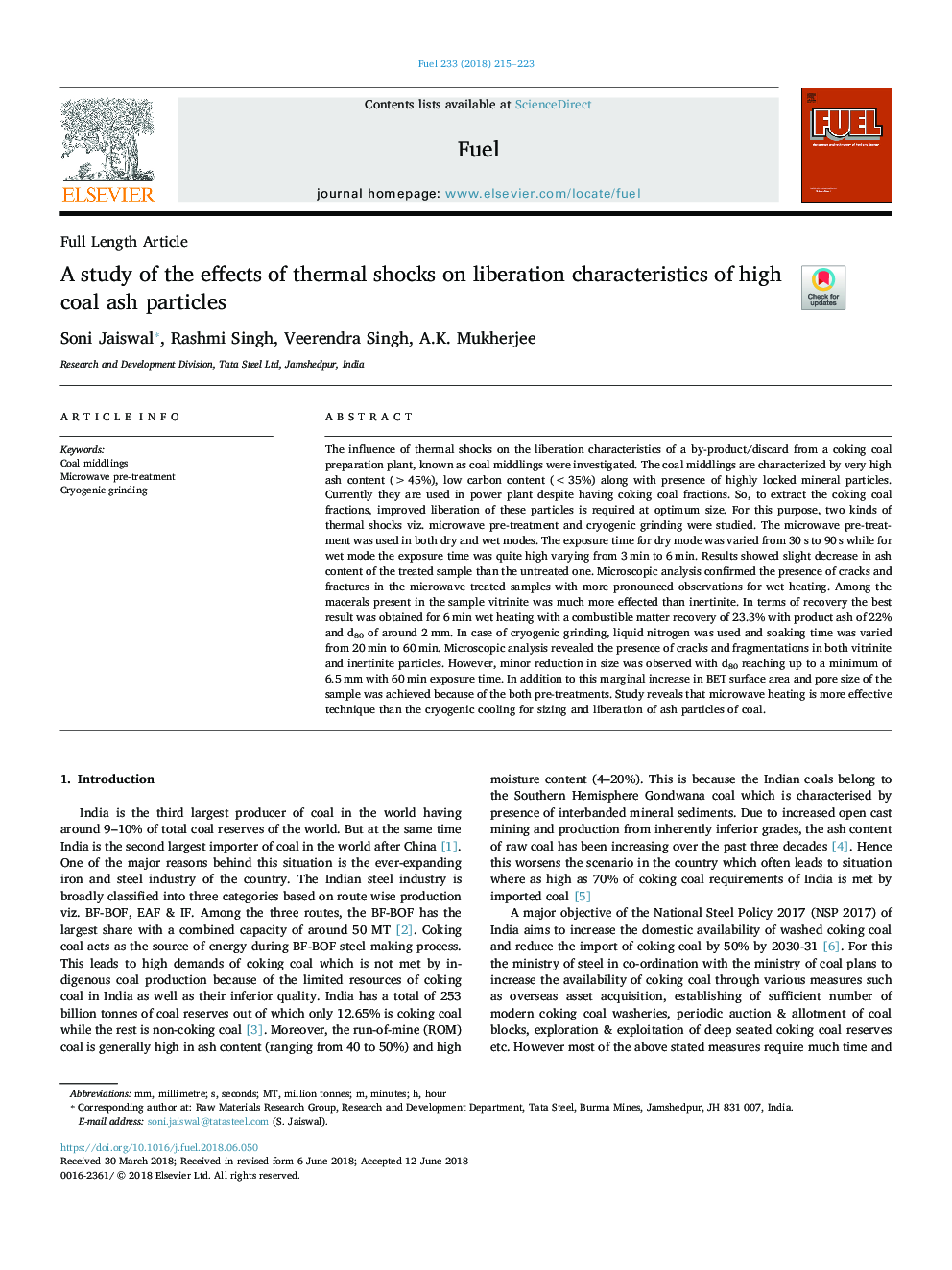| Article ID | Journal | Published Year | Pages | File Type |
|---|---|---|---|---|
| 6630198 | Fuel | 2018 | 9 Pages |
Abstract
The influence of thermal shocks on the liberation characteristics of a by-product/discard from a coking coal preparation plant, known as coal middlings were investigated. The coal middlings are characterized by very high ash content (>45%), low carbon content (<35%) along with presence of highly locked mineral particles. Currently they are used in power plant despite having coking coal fractions. So, to extract the coking coal fractions, improved liberation of these particles is required at optimum size. For this purpose, two kinds of thermal shocks viz. microwave pre-treatment and cryogenic grinding were studied. The microwave pre-treatment was used in both dry and wet modes. The exposure time for dry mode was varied from 30â¯s to 90â¯s while for wet mode the exposure time was quite high varying from 3â¯min to 6â¯min. Results showed slight decrease in ash content of the treated sample than the untreated one. Microscopic analysis confirmed the presence of cracks and fractures in the microwave treated samples with more pronounced observations for wet heating. Among the macerals present in the sample vitrinite was much more effected than inertinite. In terms of recovery the best result was obtained for 6â¯min wet heating with a combustible matter recovery of 23.3% with product ash of 22% and d80 of around 2â¯mm. In case of cryogenic grinding, liquid nitrogen was used and soaking time was varied from 20â¯min to 60â¯min. Microscopic analysis revealed the presence of cracks and fragmentations in both vitrinite and inertinite particles. However, minor reduction in size was observed with d80 reaching up to a minimum of 6.5â¯mm with 60â¯min exposure time. In addition to this marginal increase in BET surface area and pore size of the sample was achieved because of the both pre-treatments. Study reveals that microwave heating is more effective technique than the cryogenic cooling for sizing and liberation of ash particles of coal.
Related Topics
Physical Sciences and Engineering
Chemical Engineering
Chemical Engineering (General)
Authors
Soni Jaiswal, Rashmi Singh, Veerendra Singh, A.K. Mukherjee,
